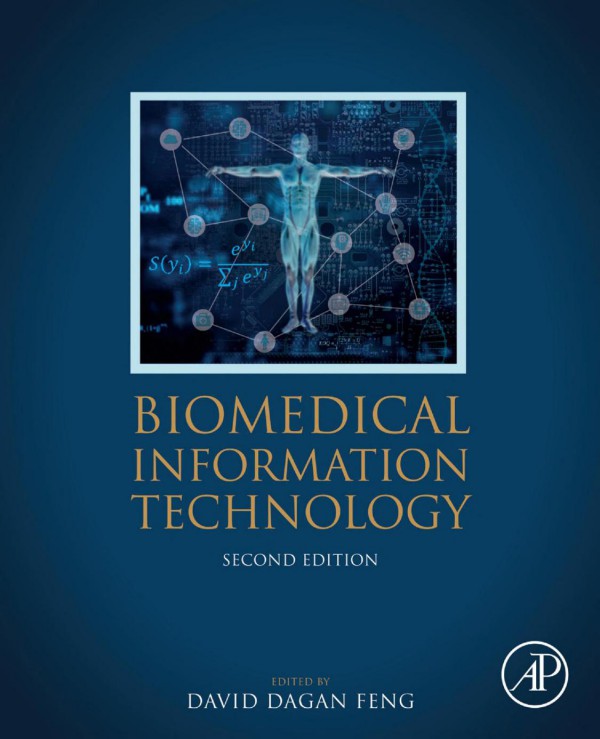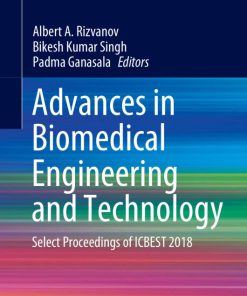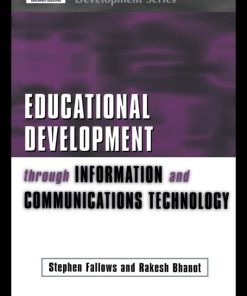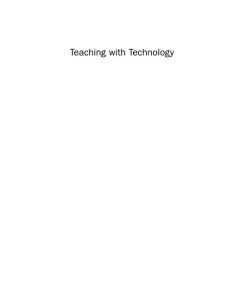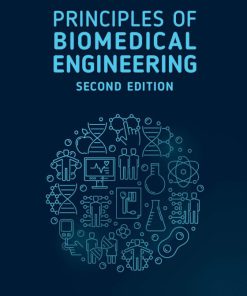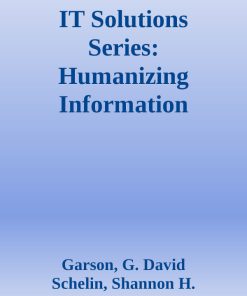(Ebook PDF) Biomedical Information Technology 2nd edition by David Dagan Feng 0128160357 9780128160350 full chapters
$50.00 Original price was: $50.00.$25.00Current price is: $25.00.
Authors:DAVID DAGAN FENG , Series:Biomedical [45] , Author sort:FENG, DAVID DAGAN , Languages:Languages:eng , Published:Published:Nov 2019 , Publisher:Apple Academic Press
Biomedical Information Technology 2nd edition by David Dagan Feng – Ebook PDF Instant Download/DeliveryISBN: 0128160357, 9780128160350
Full download Biomedical Information Technology 2nd edition after payment.
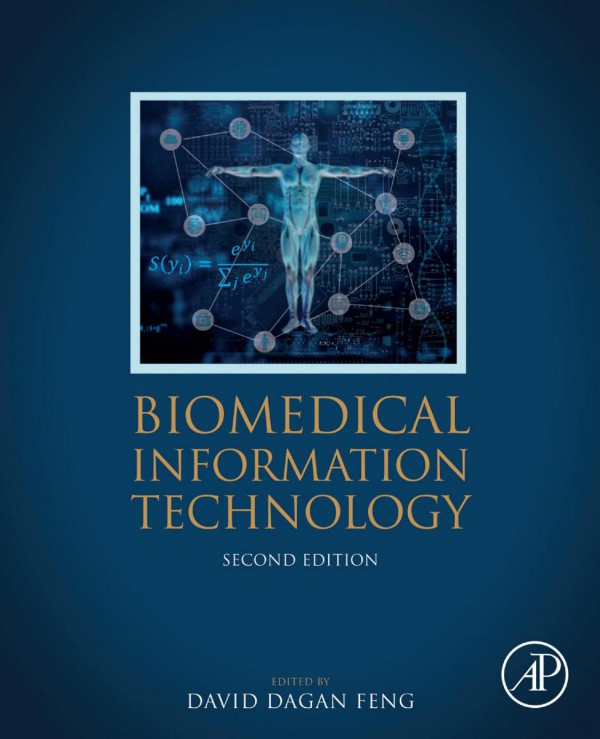
Product details:
ISBN-10 : 0128160357
ISBN-13 : 9780128160350
Author : David Dagan Feng
Biomedical Information Technology, Second Edition, contains practical, integrated clinical applications for disease detection, diagnosis, surgery, therapy and biomedical knowledge discovery, including the latest advances in the field, such as biomedical sensors, machine intelligence, artificial intelligence, deep learning in medical imaging, neural networks, natural language processing, large-scale histopathological image analysis, virtual, augmented and mixed reality, neural interfaces, and data analytics and behavioral informatics in modern medicine. The enormous growth in the field of biotechnology necessitates the utilization of information technology for the management, flow and organization of data.
Biomedical Information Technology 2nd Table of contents:
Part One. Biomedical data technologies
Chapter one. Medical imaging
1.1. Introduction
1.2. Digital radiography
1.3. Computed tomography
1.4. Nuclear medicine
1.5. Ultrasonic imaging
1.6. Magnetic resonance imaging
1.7. Diffuse optical imaging
1.8. Biosignals
1.9. Digital cameras and microscopes
Appendix
Exercises
Chapter Two. Biomedical sensors
2.1. Introduction
2.2. Wearable devices
2.3. Biochip
2.4. Biosensors
2.5. Implantable sensors
2.6. Neural sensing and interfacing
2.7. Summary
Chapter Three. Biological computing
3.1. Introduction
3.2. General workflow for the analysis of biological samples
3.3. Overview of genomic methods
3.4. Overview of proteomic methods
3.5. Biological databases and open-source software
3.6. Biological network analysis
3.7. Summary
Chapter Four. Picture archiving and communication systems and electronic medical records for the healthcare enterprise
4.1. Introduction
4.2. Picture archiving and communication system infrastructure
4.3. Picture archiving and communication system components and workflow
4.4. Picture archiving and communication system server and image archive
4.5. Picture archiving and communication system clinical experiences
4.6. Introduction to hospital clinical systems
4.7. Picture archiving and communication systems and electronic medical records
4.8. Summary
4.9. Exercises
Part Two. Artificial intelligence and big data processing in biomedicine
Chapter Five. Machine learning in medical imaging
5.1. Medical imaging
5.2. Machine intelligence and machine learning
5.3. Supervised learning
5.4. Unsupervised learning
5.5. Semisupervised learning
5.6. Reinforcement learning
5.7. Summary
5.8. Questions
Chapter Six. Health intelligence
6.1. Introduction
6.2. Predictive modeling and forecasting for health intelligence
6.3. Multiple facets of health intelligence
6.4. Conclusions
Chapter Seven. Artificial intelligence in bioinformatics: Automated methodology development for protein residue contact map prediction
7.1. Background
7.2. Evaluation of prediction performance
7.3. Contact map prediction models
7.4. Performance significantly depends on MSA features
7.5. Conclusions
Chapter Eight. Deep learning in biomedical image analysis
8.1. Introduction—deep learning meets medical image analysis
8.2. Basics of deep learning
8.3. Applications in biomedical imaging
8.4. Conclusion
CHAPTER NINE. Automatic lesion detection with three-dimensional convolutional neural networks
9.1. Introduction
9.2. 3-D convolutional neural network
9.3. Efficient fully convolutional architecture
9.4. Two-stage cascaded framework for detection
9.5. Case study I: cerebral microbleed detection in brain magnetic resonance imaging
9.6. Case study II: lung nodule detection in chest computed tomography
9.7. Discussion
9.8. Conclusions
Chapter Ten. Biomedical image segmentation for precision radiation oncology
10.1. Introduction
10.2. Graph models in biomedical image segmentation
10.3. Deep network in object detection and segmentation
10.4. Applications for medical image processing
10.5. Computational delineation and quantitative heterogeneity analysis for personalized radiation treatment planning
10.6. Summary
Chapter Eleven. Content-based large-scale medical image retrieval
11.1. Introduction
11.2. Fundamentals of content-based image retrieval
11.3. Visual feature-based retrieval
11.4. Geometric spatial feature-based retrieval
11.5. Clinical contextual and semantic retrieval
11.6. Summary
11.7. Exercises
Chapter Twelve. Diversity and novelty in biomedical information retrieval
12.1. Introduction and motivation
12.2. Overview of novelty and diversity boosting in biomedical information retrieval
12.3. Boosting diversity and novelty in biomedical information retrieval
12.4. Diversity and novelty evaluation metrics
12.5. Evaluation results of diversity and novelty metrics
12.6. Summary and future work
Chapter Thirteen. Toward large-scale histopathological image analysis via deep learning
13.1. Introduction
13.2. Unique challenges in histopathological image analysis
13.3. Computer-aided diagnosis for histopathological image analysis
13.4. Deep learning for histopathological image analysis
13.5. High-throughput histopathological image analysis
13.6. Summary
Chapter Fourteen. Data modeling and simulation
14.1. Introduction
14.2. Compartmental models
14.3. Model identification
14.4. Model validation
14.5. Case study
14.6. Quantification of medical images
14.7. Exercises
Chapter Fifteen. Image-based biomedical data modeling and parametric imaging
15.1. Introduction
15.2. Parametric image estimation methods
15.3. Noninvasive methods
15.4. Applications of parametric imaging and kinetic modeling
15.5. Summary
Chapter Sixteen. Molecular imaging in biology and pharmacology
16.1. Introduction and background
16.2. Considerations for quantitative molecular imaging
16.3. Design/development of molecular imaging probes
16.4. Molecular imaging of beta-amyloids and neurofibrillary tangles
16.5. Molecular imaging using antibody probes
16.6. Some other molecular imaging applications
16.7. Summary and future perspectives
16.8. Exercises
Chapter Seventeen. Biomedical image visualization and display technologies
17.1. Introduction
17.2. Biomedical imaging modalities
17.3. Biomedical image visualization pipeline
17.4. Volume rendering techniques
17.5. Display technology
17.6. Development platforms for biomedical image visualization
17.7. Conclusions
17.8. Questions
Chapter Eighteen. Biomedical image characterization and radiogenomics
18.1. Introduction
18.2. Radiomic characterization of medical imaging
18.3. Radiogenomics for uncovering cancer mechanism
18.4. Radiomics as signatures for non-invasive probes of cancer related molecular biomarkers
18.5. Radiogenomic applications in cancer diagnosis and treatment
18.6. Summary
Part Three. Emerging technologies in biomedicine
Chapter Nineteen. Medical robotics and computer-integrated interventional medicine
19.1. Introduction
19.2. Technology and techniques
19.3. Surgical CAD/CAM
19.4. Surgical assistance
19.5. Summary and conclusion
19.6. Exercises
Chapter Twenty. Virtual and augmented reality in medicine
20.1. Introduction
20.2. Surgical education with virtual reality technologies
20.3. Minimally invasive surgery with augmented reality
20.4. Mental health care with virtual reality and augmented reality technologies
20.5. Other medical applications with virtual and augmented reality technologies
20.6. Future research and development opportunities as well as challenges in the healthcare zone
20.7. Summary
Chapter Twenty one. Sensory information feedback for neural prostheses
21.1. Introduction
21.2. Background: anatomy and physiology of the somatosensory system
21.3. Overview of sensory feedback in neural prostheses
21.4. Anatomical targets and interface technologies for stimulating somatosensory inputs
21.5. Anatomical targets and interface technologies for sensing somatosensory inputs
21.6. Summary and future directions
Chapter Twenty Two. Mobile health (m-health): Evidence-based progress or scientific retrogression
22.1. Introduction
22.2. The science of mobile health: recent developments and challenges
22.3. Conclusions
Chapter Twenty Three. Health and medical behavior informatics
23.1. Introduction
23.2. Behavior and behavior informatics
23.3. Health and medical behavior
23.4. Health and medical behavior informatics
23.5. Related work
23.6. Prospects
People also search for Biomedical Information Technology 2nd:
what is biomedical technology all about
what is biomedical informatics
what is an example of a biomedical technology
what can i do with a biomedical technology degree
what technology do biomedical engineers use

